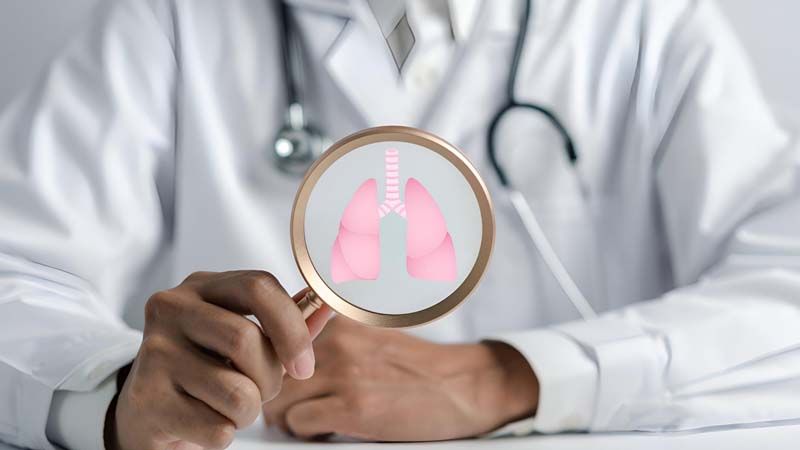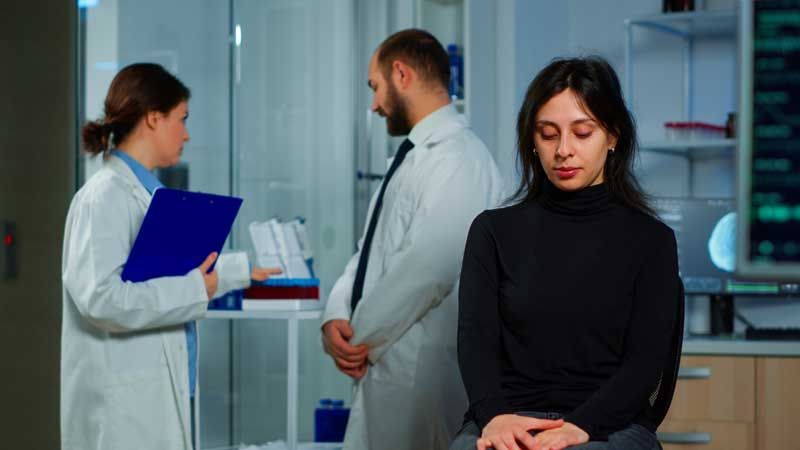Chronic Obstructive Pulmonary Disease (COPD): Symptoms, Treatment & More
- 5 days ago
Breathing is something we all take for granted until it becomes difficult. For millions of people worldwide, breathing effortlessly is not so simple. Chronic Obstructive Pulmonary Disease (COPD) is one of the leading causes of breathing difficulties and affects a significant number of adults, especially smokers. Despite its prevalence, COPD is often misunderstood or mistaken for other respiratory conditions like asthma.
This blog aims to simplify COPD for you; its causes, symptoms, diagnosis, treatment, and what you can do to manage it effectively.
What Is COPD?
COPD stands for Chronic Obstructive Pulmonary Disease, a progressive lung condition where the airways become narrowed or damaged over time, making it harder to breathe. It is a chronic condition, meaning it doesn’t go away and can gradually worsen if not managed properly.
Unlike asthma, where airway obstruction can usually be reversed with treatment or medication, COPD has little or no reversibility. Once the damage is done, it cannot be fully undone. This makes early detection and lifestyle modification crucial.
The disease often develops over many years and is strongly linked to smoking, though exposure to air pollution, chemical fumes, or dust can also increase the risk.
Two Main Components of COPD
COPD is not just one disease but a combination of two major conditions:
1. Chronic Bronchitis:
This occurs when the lining of the airways is constantly inflamed, leading to excessive mucus production and a long-term cough. If you have a cough that produces sputum for at least three months a year for two or more consecutive years, it is classified as chronic bronchitis.
2. Emphysema:
In this condition, the air sacs in your lungs (called alveoli) become enlarged and damaged. The walls of these tiny air sacs are destroyed, reducing the surface area available for oxygen exchange. As a result, breathing becomes increasingly difficult, especially during physical activity.
Both these conditions often coexist in people with COPD and together reduce the efficiency of the lungs.
What Causes COPD?
The primary cause of COPD is smoking. Around 85 to 90 percent of COPD cases are linked to tobacco use. The harmful chemicals in cigarette smoke irritate and damage the lung tissues over time, leading to chronic inflammation and narrowing of the airways.
However, even non-smokers can develop COPD due to:
- Long-term exposure to air pollutants, smoke from cooking fuel, or occupational hazards such as chemical fumes and dust.
- Genetic factors like Alpha-1 Antitrypsin Deficiency, which can make lungs more vulnerable to damage.
- Repeated respiratory infections during childhood that may weaken the lungs.
Common Signs and Symptoms of COPD
Early detection of COPD can be life-changing. However, the symptoms often develop slowly and are ignored as signs of aging or lack of fitness. Recognizing them early can help manage the disease effectively.
Common signs include:
- Chronic cough with or without sputum production
- Shortness of breath, especially during physical exertion
- Wheezing or noisy breathing
- Fatigue and reduced stamina
- Barrel chest (a rounded, expanded chest due to lung overinflation)
- Frequent respiratory infections
Over time, the simple act of climbing stairs or walking short distances can feel exhausting. Many people find that their physical activity levels drop significantly as the disease progresses.
How Is COPD Diagnosed?
If you or someone you know experiences the above symptoms, a doctor will perform a series of evaluations to confirm COPD. Common diagnostic tests include:
- Lung Function Test (Spirometry): Measures how much air you can inhale and exhale, and how quickly you can blow air out of your lungs. It’s the most important test for diagnosing COPD.
- Chest X-ray: Helps detect emphysema and rule out other lung problems such as infections or tumors.
- Arterial Blood Gas Analysis: Checks oxygen and carbon dioxide levels in your blood to assess how well your lungs are functioning.
- CT Scan or Other Blood Tests: May be done to evaluate lung structure or to look for genetic conditions linked to COPD.
Early and accurate diagnosis is essential because, although COPD cannot be cured, its progression can be slowed down significantly with timely treatment.
How Is COPD Treated?
While there is no permanent cure for COPD, the goal of treatment is to relieve symptoms, prevent complications, and improve quality of life.
Here’s how it’s managed:
Smoking Cessation
Quitting smoking is the single most effective step you can take to slow disease progression. The sooner you quit, the more lung function you can preserve. Even after years of smoking, quitting has measurable benefits.
Medications
- Bronchodilators: Help relax airway muscles, making breathing easier.
- Steroids: Reduce inflammation in the airways.
- Mucolytics: Help thin and clear mucus from the lungs.
- Salmeterol and other long-acting agents: Improve breathing over longer periods.
Oxygen Therapy (Long-Term Oxygen Therapy or LTOT)
For patients with severe COPD, supplemental oxygen can improve energy levels and prolong life.
Respiratory Rehabilitation
A structured program that combines physical exercise, breathing techniques, and nutrition counseling. This helps improve lung efficiency and overall stamina.
Vaccinations
Annual flu shots and pneumococcal vaccines help prevent infections that can worsen COPD.
Possible Complications
COPD can lead to serious complications if left untreated or poorly managed. These include:
- Acute Exacerbations (Sudden Flare-ups): Worsening symptoms that may require emergency care.
- Respiratory Failure: Inability of the lungs to maintain oxygen levels.
- Cardiac Hypertrophy (Cor Pulmonale): Heart enlargement due to strain from poor lung function.
Red Flags: When to Seek Immediate Help?
If you or a loved one with COPD experiences any of the following symptoms, seek emergency medical attention immediately:
- Gasping for air or severe shortness of breath
- Bluish lips or fingertips (a sign of low oxygen levels)
- Cold, sweaty hands
- Dizziness or loss of consciousness
These are signs of a potentially life-threatening exacerbation and require urgent care.
Living Better With COPD
While COPD is a chronic condition, it doesn’t mean life stops. With proper management, support, and lifestyle modifications, you can live a fulfilling life.
- Maintain a balanced diet to strengthen your immune system.
- Engage in light physical activities like walking or yoga as recommended by your doctor.
- Learn breathing techniques such as pursed-lip breathing to ease shortness of breath.
- Stay up-to-date on vaccinations and regular check-ups.
How The Wellness Corner Can Help?
We believe managing COPD goes beyond just medication. The Wellness Corner app offers tools to monitor symptoms, track oxygen levels, connect with doctors online, and receive personalized respiratory care guidance.
You can also take online consultations with respiratory specialists or wellness experts to create a customized lifestyle plan that complements your medical treatment.
Final Thoughts
COPD may be a lifelong condition, but early diagnosis, smoking cessation, and proper care can make a tremendous difference. Breathing freely is one of life’s greatest gifts—don’t wait until it becomes a struggle to appreciate it.
Take control of your lung health today, and if you need guidance, support, or a professional opinion, consult an expert on The Wellness Corner app.









